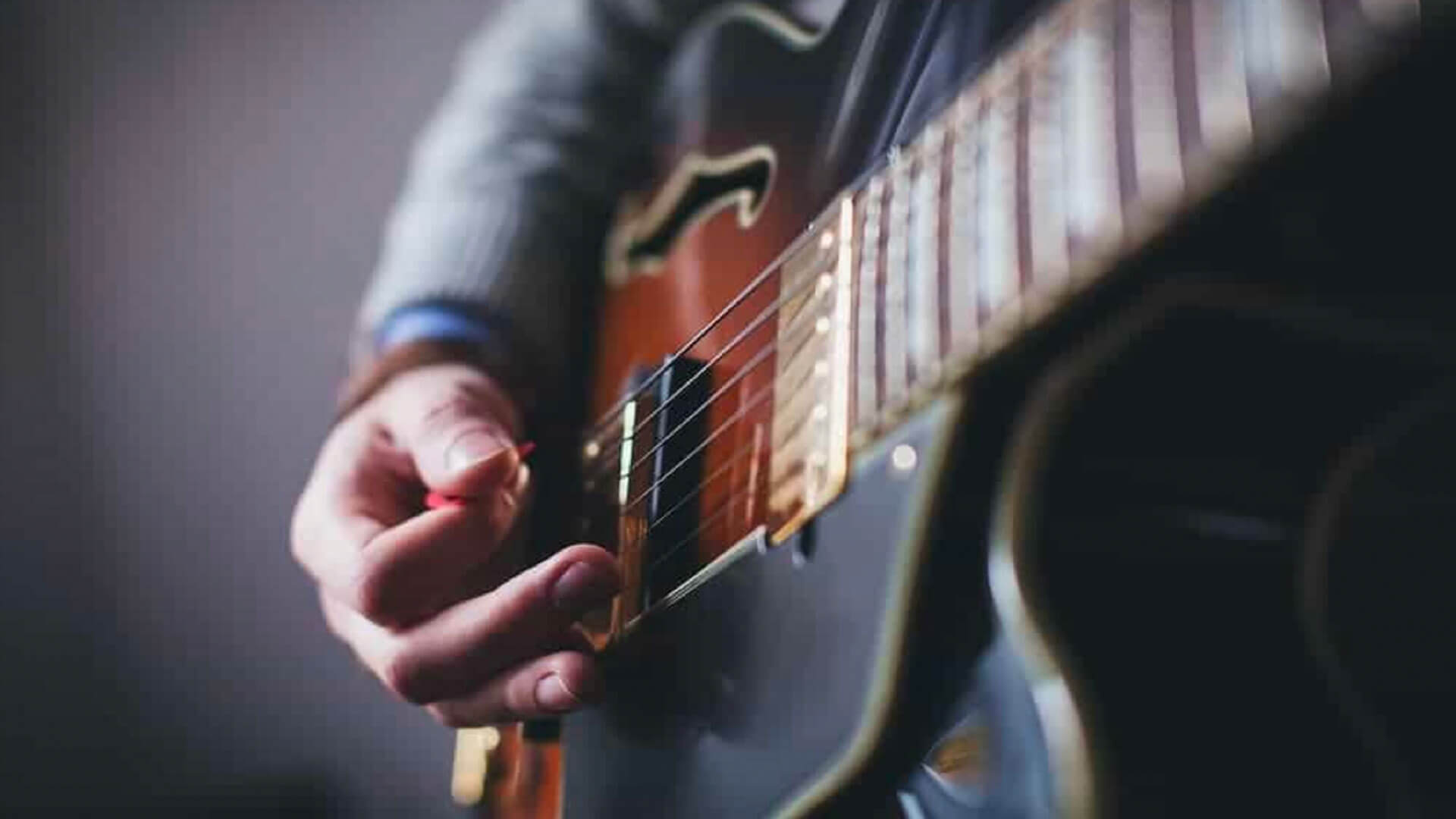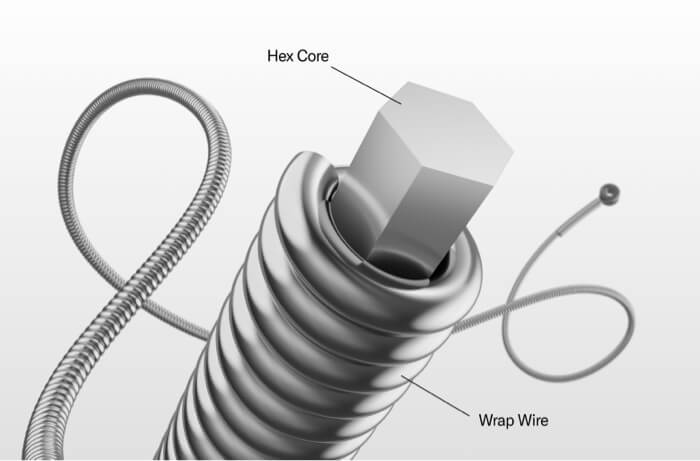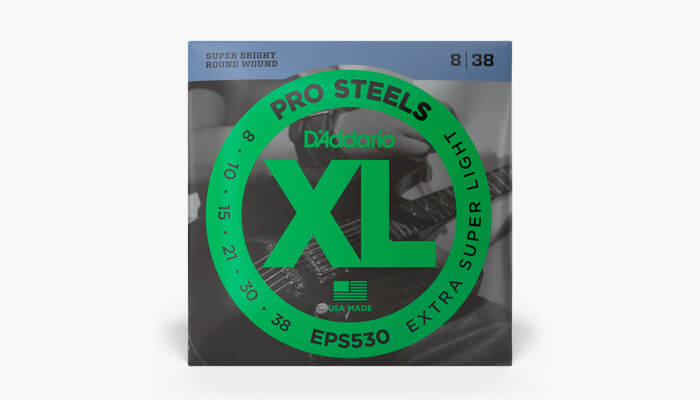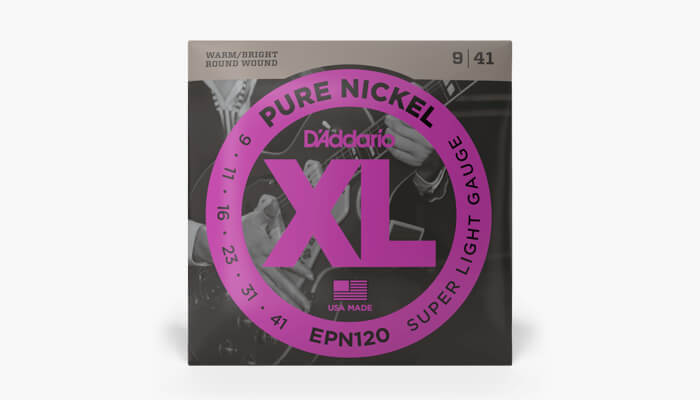How Electric Guitar Strings are Made
Electric guitar strings may seem like simple tools, but have you ever given thought to how they're made? What goes into how a string sounds? What makes them different from one another? Knowing the answers to these questions can be helpful in deciding which strings to use.
There are three key factors in making electric guitar strings which have a particular effect on sound and playing experience—construction, material, and gauge. Though only three, each has a bit of depth to it. Let's get into each element in detail to understand string making better and gain insight into what strings are best for what application.

There are three key factors in making electric guitar strings which have a particular effect on sound and playing experience—construction, material, and gauge. Though only three, each has a bit of depth to it. Let's get into each element in detail to understand string making better and gain insight into what strings are best for what application.
Construction
Construction refers to how the string is made and wound. There are three components within string construction which tell you all you need to know.
Material
With electric guitars, Ferrous alloys (contains iron and are magnetic, so they interact well with your pickups) are generally used for both the core, wrap wire and plain steel strings. These would include common string alloys such as Nickelplated Steel and various types of High-carbon and Low-carbon Steel. At times, non-ferrous alloys such as Pure Nickel are used, but these strings have less output and tend to sound warmer with less overall volume (more on that later).
String Gauge
Generally, the lighter the gauge, the thinner the tone, but there are many famous guitar players who are known for great tone that use extremely light gauges. For example, Jimmy Page and Billy Gibbons both are reported to use 8s, whereas a big part of Stevie Ray Vaughan’s fat Strat tone was due to 13s tuned down a half step (can you imagine?). I think you can safely assume, however, that most jazz players do not use extremely light strings and tend to gravitate towards 11s through 13s, depending on musical and playing style.
So, now we have the basics, let’s get into each element in detail to help make sense of what strings are best for what application.
1. Construction
There are three basic components to an electric and acoustic string. These three components can be pretty consistent from brand to brand, string to string, but of course, there are other factors involved.
The Ball End - holds the guitar string in place at the bridge or tailpiece.
The way the ball end functions differs between strings, but the goal is to allow the string to be brought to tension, bend, and stay in tune consistently. The core wire of all D'Addario strings is twisted around the ball end and secured via a signature "lock twist" method. Seems simple, but if you are having issues with tuning stability, the twist area is often the culprit.
For improved performance, you can also explore strings with reinforced twists like D'Addario NYXL strings.
Core Wire - high-carbon steel that is either hex-shaped or round on which the wrap wire is applied during the winding process.
Perception and preference dictate whether you prefer round or hex core. Here's the difference: With hex core, the six sides of the harder core delicately "bite" into the softer wrap wire, creating a tight bond and resulting in strings that many believe sound brighter, vibrate more consistently, intonate better, and last longer.
That said, there are others who believe in or adhere more to the vintage specs of round cores. Again, not good or bad, right or wrong, but something you should try for yourself to see if you can tell a difference or like one better than the other.
Wrap Wire - The outer “skin” of the string that is generally responsible for most of the string’s character and resulting tone and feel.

Let's Take a Look at the Type of Wrap Wire
Round Wound
This is your standard electric and acoustic guitar string. You know, the type that leaves grooves in your finger and gives you a little squeak as you move up and down? Round wound strings are by far the most versatile and most popular for a variety of reasons, they are easy to bend (vs. a flatwound), provide fairly long string life and have the brightest tone, so you can easily EQ to taste.

Flat Wound
The string made famous by many of the legends of the ‘50s and ‘60s, from Wes Montgomery to Kenny Burrell to Joe Pass, all of whom created an unmistakable warm, mellow tone from their archtops and flatwound strings. These strings, sometimes called “ribbon-wound” are literally made with a flattened outer wrap wire, generally made of stainless steel. This construction prevents the string from vibrating as much as a round wound string, creating a more damped, muted tone and increased tension and stiffness. The accompanying smooth feel just makes you want to play that style. If you listen to any Wes Montgomery song, you’ll get the picture. Rarely are flat wounds bent, although there are no rules and they can have a distinctive and pleasant twang when picked close to the bridge, a signature tone found in a lot of rockabilly and surf music. For the record, Flatwounds are experiencing a steady resurgence, growing in popularity. It’s great to see more players experimenting more and altering their tone with a simple change of strings.

“The Third Kind of String”
Another type of electric string construction could be called a “hybrid” of round wounds and flat wounds. There are varying methods to accomplish this effect, but it generally starts with a round outer wrap which is then partially flatted during the winding process or grinding/polishing process after the string is wound.

2. String Materials
For electric guitar strings, ferrous alloys are generally used for both the core, wrap wire, and plain steel strings as they contain iron and are magnetic, so they interact well with your pickups. These include common string alloys such as nickel-plated steel and various high-carbon and low-carbon steel. At times, non-ferrous alloys such as pure nickel are used, but those alloys have less output and tend to sound warmer, with less overall volume.
Nickel-plated Steel
Nickel-plated steel are by far the most popular and often considered the standard. It's the alloy used in XLs and most other popular electric strings, though not all nickel-plated steel is the same.

Stainless Steel
On the brighter side, or perhaps the "crunchier" side, is stainless steel. Stainless and other types of low-carbon steel are not more magnetic than nickel-plated steel, but are bold-sounding, aggressive strings which afford more presence and crunch.
On the downside, it is a harder alloy with a grittier feel and is punishing on nickel frets, so be warned. In general, it's not a common choice and only a small percentage of all electric strings sold, but those who love them, swear by them—Frank Gambale, as one example.

Pure Nickel
As a non-ferrous material, it’s placed at the bottom of the tone spectrum. These strings get most of their magnetic property from the core wire (made from highly magnetic high-carbon steel) underneath the outer wrap wire, so pickups draw less, therefore, have less output.
This was the alloy used for most electric strings in the 50s and early 60s, so if you’re looking for authentic vintage electric tone, give them a try. They definitely are not as loud, but there is a characteristic warmth about them that is increasing in popularity. If you’re accustomed to nickel-plated steel, the difference can be pretty dramatic—particularly the balance between the wound strings and plain steel strings, so give your ears a little time to adjust and appreciate the clean, pure tone. Eric Johnson is a dedicated pure nickel lover.
There are other electric alloys out there, most are variations on a theme of one of the above, so you owe it to yourself to investigate all of the options out there.
3. Gauge
Generally, the lighter the gauge, the thinner the tone—but there are many famous guitar players who are known for great tone who use extremely light gauges. For example, Jimmy Page and Billy Gibbons both are reported to use 8s, whereas a big part of Stevie Ray Vaughan's Fat Strat tone was due to using 13s tuned-down a half step (can you imagine?). I think you can safely assume, however, that most players tend to gravitate towards 9s through 11s, depending on musical and playing style.
From a tone perspective, this is an area with less science and more qualitative perception. As mentioned earlier, you can get great tone out of a light set of strings, but generally, heavier gauges produce more resonance and a wider breadth of tone. More string mass generates more energy resulting in what some would say "better" sound. Again, this is highly personal, but it's a commonly accepted belief.
There are no rules and if it "ain't broke..." But often, players move up the gauge ladder as they build up strength. Keep trying things until it feels right. With all the string options out there, there's no reason to compromise.



